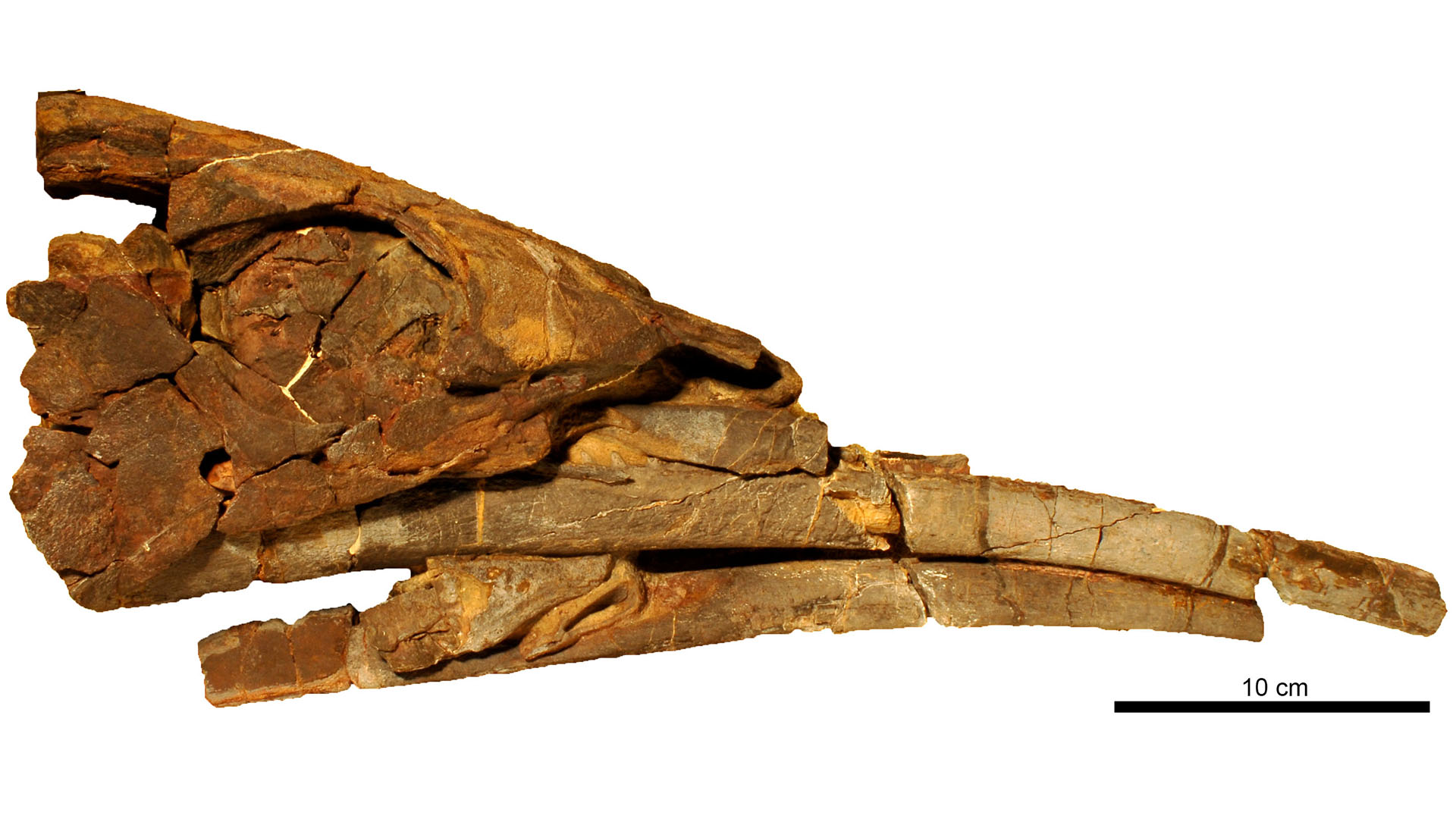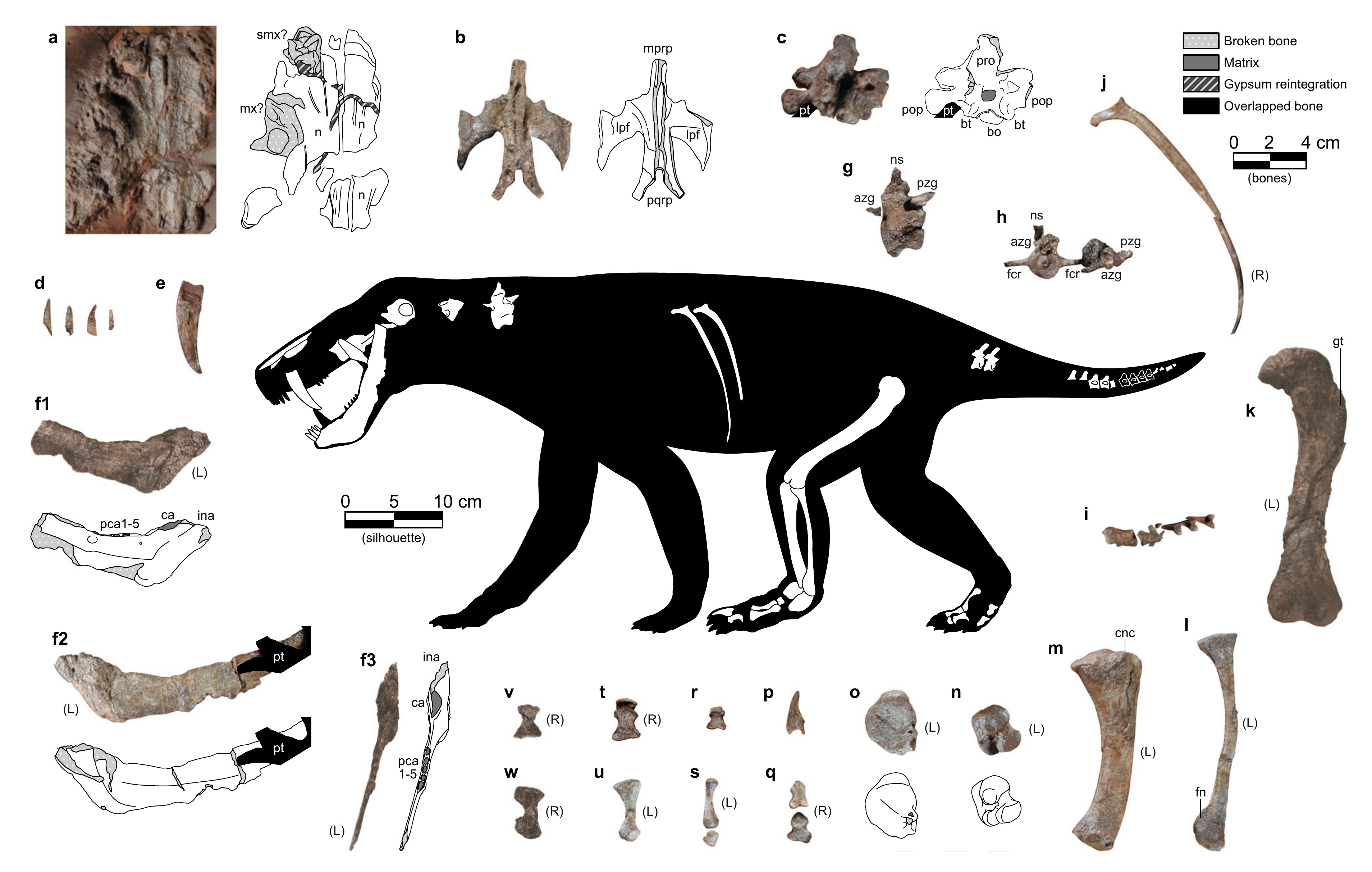Scientists have recently found an ancient fossilized fish that could rank among nature’s most extreme underbites. The first known fossil of this fish was discovered in Poland in 1957. Initially, it was thought to have a long set of fin spines, hence the name Alienacanthus. But a new analysis has revealed that these “spines” were actually an enormously elongated lower jaw studded with teeth, making this species the oldest, and one of the longest, underbites ever recorded. This study was published in the journal Royal Society Open Science on January 31, 2018.”The new Alienacanthus finds set the record straight about what this animal actually looks like, as in it doesn’t have a weird fin spine but a rather unique lower jaw,” said lead study author Melina Jobbins, a paleontologist at the University of Zürich in Switzerland, in an email to Live Science.Related: Giant ancient fish that likely preyed on humans’ ancestors unearthed in South AfricaAlienacanthus lived during the Devonian period (419 million to 358.9 million years ago) when the Earth’s land was separated into two supercontinents. Since the initial discovery of Alienacanthus, several fossil specimens have been found in the mountains of what is now central Poland and Morocco, which existed on the northeastern and the southern coasts, respectively, during the time of these ancient fish. The presence of the same species on both ends of this supercontinent suggests that Alienacanthus migrated across the ocean, despite sea level fluctuation, according to the new study’s authors, as reported in The Conversation.To learn more about the peculiar fish, researchers examined two almost complete skulls discovered in the Anti-Atlas mountain range of Morocco. They discovered that the long protrusion jutting from the head of Alienacanthus was a lower jaw, which was twice the size of the fish’s skull.Alienacanthus is a placoderm, a group of armored fish that includes some of the first jawed vertebrates. Unlike other placoderm fish, Alienacanthus’ upper jaws could move independently of the skull, allowing for its lengthy lower jaw. “This animal is so unique that the entire jaw mechanism had to work a little differently to accommodate for the lower jaws,” Jobbins told Live Science. The fossilized skull of Alienacanthus. Its bottom jaw, unfortunately, is broken in this specimen. (Image credit: Melina Jobbins and Christian Klug)Scientists compared Alienacanthus to modern-day species with mismatched jaws, such as swordfish, and proposed three main hypotheses for how these fish may have used their underbite: to trap living prey, to confuse or injure prey, or to sift through sediments in the ocean basin. “The most compelling to us is the first hypothesis, trapping live prey, which is based on the teeth,” Jobbins said. “The teeth pointing to the back prevent the prey from escaping the mouth once trapped.”The primary contender for the title of “world’s worst underbite” is the modern-day halfbeak (Hemiramphidae), a family of tiny fishes with long, beak-like jaws found in warm oceans and some estuaries around the world.The Late Devonian period presented “literally jaw-dropping diversity in jaw forms and proportions evolved,” according to study senior author Christian Klug, an adjunct professor of paleontology at the University of Zürich. This included the huge, rod-like jaws of the filter-feeder Titanichthys.Now that the “fin spine” misunderstanding has been resolved, researchers are further studying Alienacanthus to gain a better understanding of its jaw mechanics and the rest of its body.
The fossilized skull of Alienacanthus. Its bottom jaw, unfortunately, is broken in this specimen. (Image credit: Melina Jobbins and Christian Klug)Scientists compared Alienacanthus to modern-day species with mismatched jaws, such as swordfish, and proposed three main hypotheses for how these fish may have used their underbite: to trap living prey, to confuse or injure prey, or to sift through sediments in the ocean basin. “The most compelling to us is the first hypothesis, trapping live prey, which is based on the teeth,” Jobbins said. “The teeth pointing to the back prevent the prey from escaping the mouth once trapped.”The primary contender for the title of “world’s worst underbite” is the modern-day halfbeak (Hemiramphidae), a family of tiny fishes with long, beak-like jaws found in warm oceans and some estuaries around the world.The Late Devonian period presented “literally jaw-dropping diversity in jaw forms and proportions evolved,” according to study senior author Christian Klug, an adjunct professor of paleontology at the University of Zürich. This included the huge, rod-like jaws of the filter-feeder Titanichthys.Now that the “fin spine” misunderstanding has been resolved, researchers are further studying Alienacanthus to gain a better understanding of its jaw mechanics and the rest of its body.













